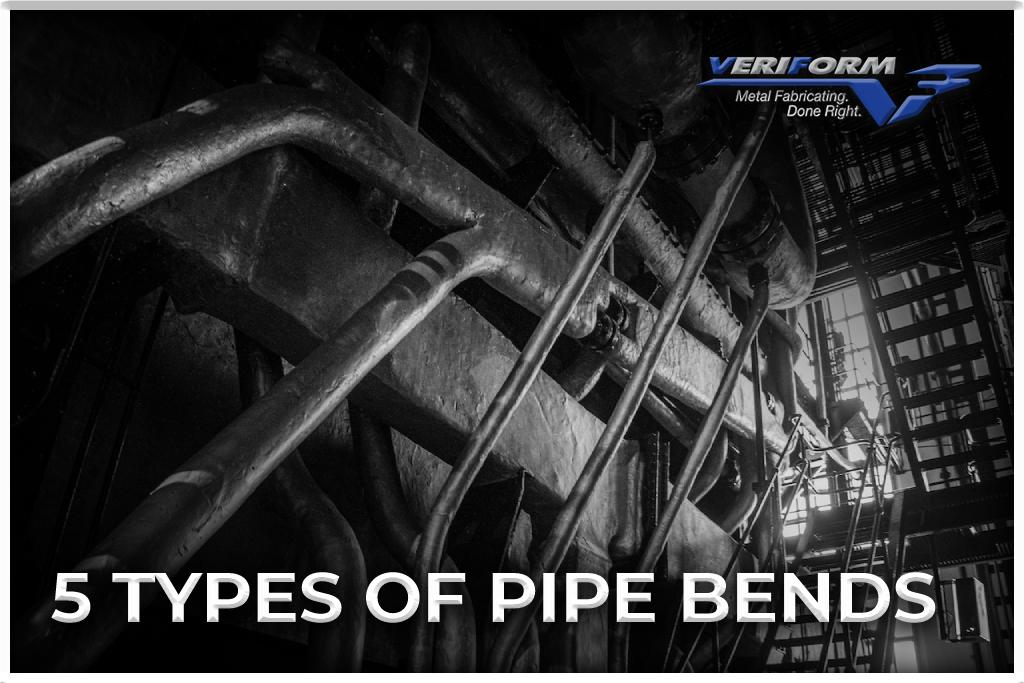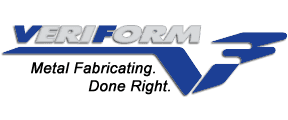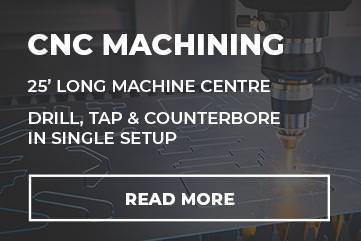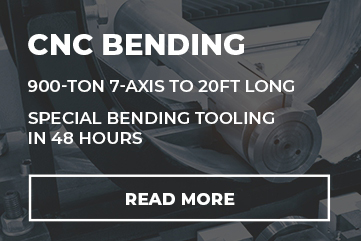News
5 Methods & Types of Pipe Bends

Bending is a fundamental process in the metal fabrication industry, used to create a range of products, from simple household items to complex aerospace components. Different types of bending methods are used depending on the material, the shape of the desired product, and the degree of precision required.
Understanding the different bending methods available can help you select the most appropriate method for your specific application. In this blog, the team at VeriForm Inc. explores some of the most common bending methods used in the industry and the types of bends they produce.
Compression Bending
Compression bending involves the use of hydraulic pressure to deform a section of the pipe and form a bend. This process is commonly used in industrial applications to create bent pipes for various uses, such as in pipelines, plumbing systems, or HVAC systems.
The compression bending process typically involves placing the pipe into a bending machine consisting of a bending die and a counter die. The bending die is designed to deform the pipe into the desired shape, while the counter die supports the pipe and prevents it from collapsing during the bending process.
The machine applies hydraulic pressure to the pipe to compress it against the bending die, causing it to bend gradually to the desired angle. The pressure is then released, and the pipe is removed from the machine.
Compression pipe bending can be used to create bends of various angles and radii, depending on the specific needs of the application. The method is preferred over other bending techniques for thick-walled or heavy pipes, as it can produce high-quality bends with minimal distortion or deformation.
Rotary Draw Bending
Rotary draw bending is used to create precise and consistent bends. In this process, a mandrel is inserted into the tube or pipe to prevent it from collapsing or wrinkling during the bending process. The tube or pipe is then clamped onto a die, and a rotary draw bending machine is used to rotate the die while pulling the tube or pipe around the die to create the desired bend.
The bending process is controlled by a computerized program that ensures the tube or pipe is bent to the correct angle and radius, resulting in accurate and repeatable bends. For this reason, it is a preferred method for metal pipe and tube bending.
Rotary draw bending is commonly used in the automotive, aerospace, and industrial manufacturing industries to create a variety of products, such as exhaust systems, roll cages, and frames.
Roll Bending
Roll bending forms a metal sheet or plate into a curved shape by passing it through a set of three or more rollers. The rollers are arranged in a pyramid shape and rotate around their respective axes, and the metal sheet or plate is passed between them in a series of incremental steps until the desired curvature is achieved.
Roll bending is commonly used in the fabrication of pipes, tubes, and other cylindrical or curved shapes and can be performed using either a pyramid-style machine or a three-roll machine. The process can be used with a variety of materials, including steel, aluminum, and copper, and can produce a range of curves, including tight radii and gradual curves. It is a highly precise and efficient process that can produce consistent results with minimal waste, making it a popular choice for industrial manufacturing applications.
Mandrel Tube Bending
Mandrel tube bending is used to bend pipes or tubes without collapsing or wrinkling the walls of the tube. The process uses a mandrel, which is a solid steel rod or shaft, to support the inside of the tube while it is being bent. This prevents it from collapsing or wrinkling during the bending process.
Before the bending process begins, the mandrel is inserted into the tube. As the tube bends, the mandrel remains stationary and supports the inner radius. This keeps the tube from collapsing or wrinkling on the inside of the bend.
Mandrel tube bending is used in a wide variety of industries, including automotive, aerospace, and construction. It is often used to create complex or custom shapes in tubes or pipes, such as exhaust systems or roll cages. The process can be performed using manual or CNC-controlled tube bending machines.
Press Bending
In press bending, metal sheets are bent using a press brake machine. A flatbed and a top tool move downward to apply force to the metal sheets. After the metal sheet is placed on the flatbed, the top tool is lowered onto it to bend it.
Press bending can be used to create a wide range of shapes, including V-shaped, U-shaped, and channel-shaped bends. It is commonly used in the manufacturing of parts for various industries, including automotive, aerospace, and construction. It can also be used on a variety of materials, including steel, aluminum, and other metals.
What Are The Different Types of Pipe Bends?
The bending methods described above can be used to shape a wide range of pipes. They include but may not be limited to:
● Long Radius Bend: A long radius bend has a centerline radius that is equal to 1.5 times the pipe diameter. This type of bend is used in low-pressure and low-velocity applications where there is a need for minimum pressure drop.
● Short Radius Bend: A short radius bend has a centerline radius that is equal to the pipe diameter. This type of bend is used in high-pressure and high-velocity applications where there is a need for maximum pressure drop.
● 3D Bend: A 3D bend has a centerline radius that is equal to three times the pipe diameter. This type of bend is used when space is limited, and there is a need for a tight bend radius.
● 5D Bend: A 5D bend has a centerline radius that is equal to five times the pipe diameter. This type of bend is used in applications where there is a need for a larger bend radius.
● 10D Bend: A 10D bend has a centerline radius that is equal to ten times the pipe diameter. This type of bend is used in applications where there is a need for a very large bend radius.
● Mitered Bend: A mitered bend is a custom bend that is fabricated from straight pipe sections. It is used when a specific angle is required that is not available in standard pipe fittings.
The choice of pipe bend type depends on various factors such as the budget, application, space limitations, pressure, and flow rate of the fluid being transported.
VeriForm Inc.: Your Pipe Bending Experts
Pipe bending methods are essential techniques in the manufacturing and construction industries. The choice of a suitable bending method depends on several factors, including the pipe material, wall thickness, diameter, and required bend radius. Overall, understanding the advantages and limitations of each bending method can help you make an informed decision on which one is most appropriate for your application.
At VeriForm Inc., our metal bending services are both complex and diverse. Whether you need parts small enough to fit in your palm or a piece with massive dimensions and tonnage, we can help. To learn more or get a quote for your next project, please visit our website, call 519-653-6000 or contact us online.








